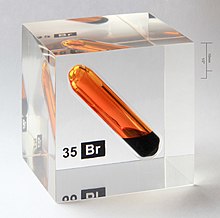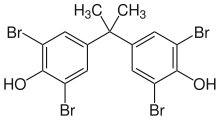 | |
| Agency overview | |
|---|---|
| Formed | 1971 |
| Jurisdiction | Federal government of the United States |
| Headquarters | Frances Perkins Building Washington, D.C. |
| Employees | 2,265 (2015) |
| Annual budget | $552 million (2015) |
| Agency executive |
|
| Parent department | United States Department of Labor |
| Website | www |
The Occupational Safety and Health Administration (OSHA) (/ˈoʊʃə/) is an agency of the United States Department of Labor. Congress established the agency under the Occupational Safety and Health Act (OSH Act), which President Richard M. Nixon signed into law on December 29, 1970. OSHA's mission is to "assure safe and healthy working conditions for working men and women by setting and enforcing standards and by providing training, outreach, education and assistance". The agency is also charged with enforcing a variety of whistleblower statutes and regulations. OSHA is currently headed by Acting Assistant Secretary of Labor Loren Sweatt. OSHA's workplace safety inspections have been shown to reduce injury rates and injury costs without adverse effects to employment, sales, credit ratings, or firm survival.
History
OSHA officially formed on April 28, 1971, the date that the OSH Act became effective. George Guenther was appointed as the agency's first director.
OSHA has a number of training, compliance assistance, and health
and safety recognition programs throughout its history. The OSHA
Training Institute, which trains government and private sector health
and safety personnel, began in 1972.
In 1978, the agency began a grantmaking program, now called the Susan
Harwood Training Grant Program, to train workers and employers in
reducing workplace hazards.
OSHA started the Voluntary Protection Programs in 1982, which allow
employers to apply as "model workplaces" to achieve special designation
if they meet certain requirements.
OSH Act coverage
The
OSH Act covers most private sector employers and their workers, in
addition to some public sector employers and workers in the 50 states
and certain territories and jurisdictions under federal authority. Those
jurisdictions include the District of Columbia, Puerto Rico, the Virgin Islands, American Samoa, Guam, Northern Mariana Islands, Wake Island, Johnston Island, and the Outer Continental Shelf Lands as defined in the Outer Continental Shelf Lands Act.
Private sector employers
The OSH Act covers most private sector employers in all 50 states, the District of Columbia, and other U.S. jurisdictions—either directly through federal OSHA or through an OSHA approved state plan.
State plans are OSHA-approved job safety and health programs
operated by individual states instead of federal OSHA. Federal OSHA
approves and monitors all state plans and provides as much as fifty
percent of the funding for each program. State-run safety and health
programs are required to be at least as effective as the federal OSHA
program.
The following 22 states or territories have OSHA-approved state programs: Alaska, Arizona, California, Hawaii, Indiana, Iowa, Kentucky, Maryland, Michigan, Minnesota, Nevada, New Mexico, North Carolina, Oregon, Puerto Rico, South Carolina, Tennessee, Utah, Vermont, Virginia, Washington, and Wyoming.
Federal OSHA provides coverage to certain workplaces specifically
excluded from a state’s plan — for example, work in maritime industries
or on military bases.
State and local governments
Workers
at state and local government agencies are not covered by federal OSHA,
but have OSH Act protections if they work in those states that have an
OSHA-approved state program. OSH Act rules also permit states and
territories to develop plans that cover only public sector (state and
local government) workers. In these cases, private sector workers and
employers remain under federal OSHA jurisdiction. Five additional states
and one U.S. territory have OSHA approved state plans that cover public
sector workers only: Connecticut, Illinois, Maine, New Jersey, New York, and the Virgin Islands.
Federal government agencies
OSHA’s
protection applies to all federal agencies. Section 19 of the OSH Act
makes federal agency heads responsible for providing safe and healthful
working conditions for their workers. OSHA conducts inspections of
federal facilities in response to workers’ reports of hazards and under
programs that target high hazard federal workplaces.
Federal agencies must have a safety and health program that meets
the same standards as private employers. OSHA issues “virtual fines” to
federal agencies – following an inspection where violations are found,
OSHA issues a press release stating the size the fine would be if the
federal agency were a private sector employer. Under a 1998 amendment,
the OSHA Act covers the U.S. Postal Service the same as any private sector employer.
Not covered under the OSH Act
The
OSH Act does not cover the self-employed, immediate family members of
farm employers, or workplace hazards regulated by another federal agency
(for example, the Mine Safety and Health Administration, the Department of Energy, or Coast Guard).
Rights and responsibilities under OSH Act law
Employers have the responsibility to provide a safe workplace.
By law, employers must provide their workers with a workplace
that does not have serious hazards and must follow all OSH Act safety
and health standards. Employers must find and correct safety and health
problems. The OSH Act further requires that employers must first try to
eliminate or reduce hazards by making feasible changes in working
conditions rather than relying on personal protective equipment such as
masks, gloves, or earplugs. Switching to safer chemicals, enclosing
processes to trap harmful fumes, or using ventilation systems to clean
the air are examples of effective ways to eliminate or reduce risks.
Employers must also:
- Inform workers about chemical hazards through training, labels, alarms, color-coded systems, chemical information sheets and other methods.
- Provide safety training to workers in a language and vocabulary they can understand.
- Keep accurate records of work-related injuries and illnesses.
- Perform tests in the workplace, such as air sampling, required by some OSH Act standards.
- Provide required personal protective equipment at no cost to workers. (Employers must pay for most types of required personal protective equipment.)
- Provide hearing exams or other medical tests when required by OSH Act standards.
- Post OSHA citations and annually post injury and illness summary data where workers can see them.
- Notify OSHA within eight hours of a workplace fatality. Notify OSHA within 24 hours of all work-related inpatient hospitalizations, all amputations, and all losses of an eye (1-800-321-OSHA [6742]).
- Prominently display the official OSHA Job Safety and Health – It’s the Law poster that describes rights and responsibilities under the OSH Act.
- Not retaliate or discriminate against workers for using their rights under the law, including their right to report a work-related injury or illness.
Workers have the right to:
- Working conditions that do not pose a risk of serious harm.
- File a confidential complaint with OSHA to have their workplace inspected.
- Receive information and training about hazards, methods to prevent harm, and the OSH Act standards that apply to their workplace. The training must be done in a language and vocabulary workers can understand.
- Receive copies of records of work-related injuries and illnesses that occur in their workplace.
- Receive copies of the results from tests and monitoring done to find and measure hazards in their workplace.
- Receive copies of their workplace medical records.
- Participate in an OSHA inspection and speak in private with the inspector.
- File a complaint with OSHA if they have been retaliated or discriminated against by their employer as the result of requesting an inspection or using any of their other rights under the OSH Act.
- File a complaint if punished or retaliated against for acting as a “whistleblower” under the 21 additional federal laws for which OSHA has jurisdiction.
Temporary workers must be treated like permanent employees.
Staffing agencies and host employers share a joint accountability over
temporary workers. Both entities are therefore bound to comply with
workplace health and safety requirements and to ensure worker safety and
health. OSHA could hold both the host and temporary employers
responsible for the violation of any condition.
Health and safety standards
The
Occupational Safety and Health Act grant OSHA the authority to issue
workplace health and safety regulations. These regulations include
limits on hazardous chemical exposure, employee access to hazard
information, requirements for the use of personal protective equipment,
and requirements to prevent falls and hazards from operating dangerous
equipment.
The OSH Act's current Construction, General Industry, Maritime and Agriculture standards
are designed to protect workers from a wide range of serious hazards.
Examples of OSHA standards include requirements for employers to provide
fall protection such as a safety harness/line or guardrails; prevent
trenching cave-ins;
prevent exposure to some infectious diseases; ensure the safety of
workers who enter confined spaces; prevent exposure to harmful
chemicals; put guards on dangerous machines; provide respirators or
other safety equipment; and provide training for certain dangerous jobs
in a language and vocabulary workers can understand.
OSHA sets enforceable permissible exposure limits
(PELs) to protect workers against the health effects of exposure to
hazardous substances, including limits on the airborne concentrations of
hazardous chemicals in the air.
Most of OSHA’s PELs were issued shortly after adoption of the OSH Act
in 1970. Attempts to issue more stringent PELs have been blocked by
litigation from industry; thus, the vast majority of PELs have not been
updated since 1971. The agency has issued non-binding, alternate occupational exposure limits that may better protect workers.
Employers must also comply with the General Duty Clause of the
OSH Act. This clause requires employers to keep their workplaces free of
serious recognized hazards and is generally cited when no specific OSHA
standard applies to the hazard.
In its first year of operation, OSHA was permitted to adopt
regulations based on guidelines set by certain standards organizations,
such as the American Conference of Governmental Industrial Hygienists,
without going through all of the requirements of a typical rulemaking.
OSHA is granted the authority to promulgate standards that prescribe the
methods employers are legally required to follow to protect their
workers from hazards. Before OSHA can issue a standard, it must go
through a very extensive and lengthy process that includes substantial
public engagement, notice and comment. The agency must show that a
significant risk to workers exists and that there are feasible measures
employers can take to protect their workers.
In 2000, OSHA issued an ergonomics standard. In March 2001, Congress voted to repeal the standard through the Congressional Review Act. The repeal, one of the first major pieces of legislation signed by President George W. Bush, is the first instance that Congress has successfully used the Congressional Review Act to block regulation.
Since 2001, OSHA has issued the following standards:
- 2002: Exit Routes, Emergency Action Plans, and Fire Prevention Plans
- 2004: Commercial Diving Operations
- 2004: Fire Protection in Shipyards
- 2006: Occupational Exposure to Hexavalent Chromium
- 2006: Assigned Protection Factors for Respiratory Protection Equipment
- 2007: Electrical Installation Standard
- 2007: Personal Protective Equipment Payment (Clarification)
- 2008: Vertical Tandem Lifts
- 2010: Cranes and Derricks in Construction
- 2010: General Working Conditions in Shipyards
- 2012: GHS Update to the Hazard Communication Standard
- 2014: New Recordkeeping and Reporting Requirements for Employers
- 2014: Revision to Electric Power Generation, Transmission, and Distribution; Electrical Protective Equipment
- 2016: Occupational Exposure to Respirable Crystalline Silica
- 2016: Update General Industry Walking-Working Surfaces and Fall Protection Standards
Enforcement
OSHA
is responsible for enforcing its standards on regulated entities.
Compliance Safety and Health Officers carry out inspections and assess
fines for regulatory violations. Inspections are planned for worksites
in particularly hazardous industries. Inspections can also be triggered
by a workplace fatality, multiple hospitalizations, worker complaints,
or referrals.
OSHA is a small agency, given the size of its mission: with its
state partners, OSHA has approximately 2,400 inspectors covering more
than 8 million workplaces where 130 million workers are employed. In
Fiscal Year 2012 (ending Sept. 30), OSHA and its state partners
conducted more than 83,000 inspections of workplaces across the United
States — just a fraction of the nation’s worksites. According to a report by AFL–CIO, it would take OSHA 129 years to inspect all workplaces under its jurisdiction.
Enforcement plays an important part in OSHA’s efforts to reduce
workplace injuries, illnesses, and fatalities. Inspections are initiated
without advance notice, conducted using on-site or telephone and
facsimile investigations, performed by trained compliance officers and
scheduled based on the following priorities [highest to lowest]:
imminent danger; catastrophes – fatalities or hospitalizations; worker
complaints and referrals; targeted inspections – particular hazards,
high injury rates; and follow-up inspections.
Current workers or their representatives may file a complaint and
ask OSHA to inspect their workplace if they believe that there is a
serious hazard or that their employer is not following OSHA standards.
Workers and their representatives have the right to ask for an
inspection without OSHA telling their employer who filed the complaint.
It is a violation of the OSH Act for an employer to fire, demote,
transfer or in any way discriminate against a worker for filing a
complaint or using other OSHA rights.
When an inspector finds violations of OSHA standards or serious
hazards, OSHA may issue citations and fines. A citation includes methods
an employer may use to fix a problem and the date by which the
corrective actions must be completed.
OSHA’s fines are very low compared with other government
agencies. They were raised for the first time since 1990 on Aug. 2, 2016
to comply with the 2015 Federal Civil Penalties Inflation Adjustment
Act Improvements Act passed by Congress to advance the effectiveness of
civil monetary penalties and to maintain their deterrent effect. The new
law directs agencies to adjust their penalties for inflation each year.
The maximum OSHA fine for a serious violation is $12,500 and the
maximum fine for a repeat or willful violation is $125,000.
In determining the amount of the proposed penalty, OSHA must take into
account the gravity of the alleged violation and the employer’s size of
the business, good faith and history of previous violations. Employers
have the right to contest any part of the citation, including whether a
violation actually exists.
Workers only have the right to challenge the deadline by which a
problem must be resolved. Appeals of citations are heard by the
independent Occupational Safety and Health Review Commission (OSHRC).
OSHA carries out its enforcement activities through its 10 regional offices and 90 area offices. OSHA’s regional offices are located in Boston, New York City, Philadelphia, Atlanta, Chicago, Dallas, Kansas City metropolitan area, Denver, San Francisco, and Seattle.
Record keeping requirements
Tracking
and investigating workplace injuries and illnesses play an important
role in preventing future injuries and illnesses. Under OSHA’s
Recordkeeping regulation, certain covered employers in high hazard
industries are required to prepare and maintain records of serious
occupational injuries and illnesses. This information is important for
employers, workers and OSHA in evaluating the safety of a workplace,
understanding industry hazards, and implementing worker protections to
reduce and eliminate hazards.
Employers with more than ten employees and whose establishments
are not classified as a partially exempt industry must record serious
work-related injuries and illnesses using OSHA Forms 300, 300A and 301.
Recordkeeping forms, requirements and exemption information are at
OSHA’s website.
Whistleblower protection
OSHA
enforces the whistleblower provisions of the Occupational Safety and
Health Act and 21 other statutes protecting workers who report
violations of various airline, commercial motor carrier, consumer
product, environmental, financial reform, food safety, health care
reform, nuclear, pipeline, public transportation agency, maritime and
securities laws.
Over the years, OSHA has been responsible for enforcing these laws that
protect the rights of workers to speak up without fear of retaliation,
regardless of the relationship of these laws to occupational safety and
health matters.
Compliance assistance
OSHA has developed several training, compliance assistance, and health and safety recognition programs throughout its history.
The OSHA Training Institute, which trains government and private sector health and safety personnel, began in 1972.
In 1978, the agency began a grant making program, now called the Susan
Harwood Training Grant Program, to train workers and employers in
identifying and reducing workplace hazards.
The Voluntary Protection Program (VPP) recognize employers and
workers in private industry and federal agencies who have implemented
effective safety and health management programs and maintain injury and
illness rates below the national average for their respective
industries. In VPP, management, labor, and OSHA work cooperatively and
proactively to prevent fatalities, injuries, and illnesses through a
system focused on: hazard prevention and control, worksite analysis,
training, and management commitment and worker involvement.
OSHA’s On-site Consultation Program
offers free and confidential advice to small and medium-sized
businesses in all states across the country, with priority given to
high-hazard worksites. Each year, responding to requests from small
employers looking to create or improve their safety and health
management programs, OSHA’s On-site Consultation Program conducts over
29,000 visits to small business worksites covering over 1.5 million
workers across the nation. On-site consultation services are separate
from enforcement and do not result in penalties or citations.
Consultants from state agencies or universities work with employers to
identify workplace hazards, provide advice on compliance with OSHA
standards, and assist in establishing safety and health management
programs.
Under the consultation program, certain exemplary employers may request participation in OSHA’s Safety and Health Achievement Recognition Program (SHARP).
Eligibility for participation includes, but is not limited to,
receiving a full-service, comprehensive consultation visit, correcting
all identified hazards and developing an effective safety and health
management program. Worksites that receive SHARP recognition are exempt
from programmed inspections during the period that the SHARP
certification is valid.
OSHA also provides compliance assistance through its national and
area offices. Through hundreds of publications in a variety of
languages, website safety and health topics pages, and through
compliance assistance staff OSHA provides information to employers and
workers on specific hazards and OSHA rights and responsibilities.
Efficacy
A 2012 study in Science
found that OSHA's random workplace safety inspections caused a "9.4%
decline in injury rates" and a "26% reduction in injury cost" for the
inspected firms.
The study found "no evidence that these improvements came at the
expense of employment, sales, credit ratings, or firm survival."
Much of the debate about OSHA regulations and enforcement
policies revolves around the cost of regulations and enforcement, versus
the actual benefit in reduced worker injury, illness and death. A 1995
study of several OSHA standards by the Office of Technology Assessment
(OTA) found that OSHA relies "generally on methods that provide a
credible basis for the determinations essential to rulemakings". Though
it found that OSHA's finding and estimates are "subject to vigorous
review and challenge", it stated that this is natural because
"interested parties and experts involved in rulemakings have differing
visions".
OSHA has come under considerable criticism for the
ineffectiveness of its penalties, particularly its criminal penalties.
The maximum penalty is a misdemeanor with a maximum of 6-months in jail.
In response to the criticism, OSHA, in conjunction with the Department
of Justice, has pursued several high-profile criminal prosecutions for
violations under the Act, and has announced a joint enforcement
initiative between OSHA and the United States Environmental Protection Agency (EPA) which has the ability to issue much higher fines than OSHA. Meanwhile, Congressional Democrats, labor unions and community safety and health advocates are attempting to revise the OSH Act
to make it a felony with much higher penalties to commit a willful
violation that results in the death of a worker. Some local prosecutors
are charging company executives with manslaughter and other felonies when criminal negligence leads to the death of a worker.
A New York Times investigation in 2003 showed that over
the 20-year period from 1982 to 2002, 2,197 workers died in 1,242
incidents in which OSHA investigators concluded that employers had
willfully violated workplace safety laws. In 93% of these fatality cases
arising from wilful violation, OSHA made no referral to the U.S. Department of Justice for criminal prosecution. The Times
investigation found that OSHA had failed to pursue prosecution "even
when employers had been cited before for the very same safety violation"
and even in cases where multiple worker died. In interviews, current
and former OSHA officials said that the low rates of criminal
enforcement were the result of "a bureaucracy that works at every level
to thwart criminal referrals. ... that fails to reward, and sometimes
penalizes, those who push too hard for prosecution" and that "
aggressive enforcement [was] suffocated by endless layers of review.
OSHA has also been criticized for taking too long to develop new regulations. For instance, speaking about OSHA under the George W. Bush presidency on the specific issue of combustible dust explosions, Chemical Safety Board
appointee Carolyn Merritt said: "The basic disappointment has been this
attitude of no new regulation. They don't want industry to be pestered.
In some instances, industry has to be pestered in order to comply."
















